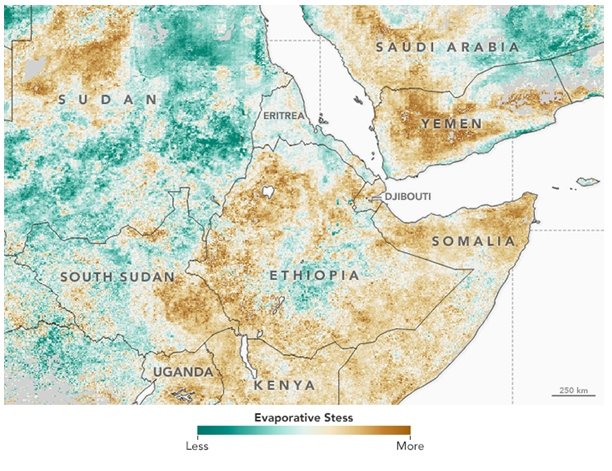The Horn of Africa is the region of East Africa, located where the Red Sea drains with the Indian Ocean in the southern part of the Gulf of Aden, facing the Arabian peninsula. It gets its name for its peculiar triangular shape and its locationand it is for many researchers the place where the first human beings settled.

Tthe Horn of Africa covers an area of approximately 2,000,000 km² and is inhabited by a population that exceeds 100 million people. it has scarce resources with a population dedicated to agriculture, the cultivation of coffee and bananas are its export products.
- The states of the region depend in large part on some exports of a single product, usually monoculture:
- Eritrea: 80% of the population occupied in agriculture and livestock.
- Ethiopia: coffee 80% of total exports.
- Somalia: bananas and cattle over 50% of total exports.
- Djibouti: based mainly on related services.
Countries make up the Horn of Africa?
It is made up of the following eight countries: Eritrea, Ethiopia, Kenya, Somalia, Sudan, South Sudan, Uganda and Djibouti.

Food shortage and drought in the Great Horn of Africa:
Although food shortages are relatively common in this part of the world, the formal declaration of hunger is unusual. The technical definition requires that one in five households in a given area face extreme food shortages; that 30 percent of the population is undernourished; and that the mortality rate exceeds 2 people per 10,000 per day.

Kilometrica crack that is separating the African continent:
Within tens of millions of years, they will separate the Horn of Africa from the continent, recently the crack has crossed Mai Mahiu road to Narok, west of Nairobi (Kenya).

The cracks appeared in the Great Rift Valley, one of the most unstable terrains of the African continent. As its name suggests, there is a system of rifts, pits where two tectonic plates are separating. As reported by National Geographic. Each of them is marked by the presence of many volcanoes.
In tens of millions of years the tension will separate the plates and the ocean will end up filling the resulting gap. Then, the continent will be smaller and a large island will appear in the Indian Ocean with parts of present-day Ethiopia, Somalia and the Horn of Africa. This will happen very slowly and nobody will be able to perceive it, but there will be great earthquakes and sudden cracks will appear suddenly.
Geologist Lucía Pérez Díaz, a researcher at the Royal Holloway University in London, explained that in a few tens of millions of years the tension will separate the plates and the ocean will end up filling the resulting gap. Then, the continent will be smaller and a large island will appear in the Indian Ocean with parts of present-day Ethiopia, Somalia and the Horn of Africa. This will happen very slowly and nobody will be able to perceive it, but there will be great earthquakes and sudden cracks will appear suddenly.
http://www.saberia.com/que-paises-integran-el-cuerno-de-africa/
https://es.wikipedia.org/wiki/Cuerno_de_%C3%81frica
http://www.diarionorte.com/article/165059/kenia-se-abre-una-grieta-que-parte-a-africa-en-dos
Thank you for your contribution. Dont forget to link references and sources when applicable!
=======================================================================================
This post was upvoted and resteemed by Steemgridcoin with the aim of promoting discussions surrounding Gridcoin and science.
This service is free. You can learn more on how to help here.
Have a nice day. :)